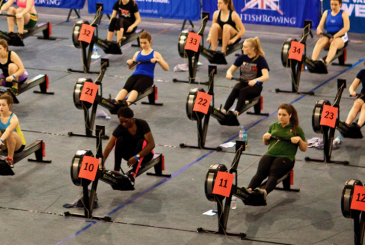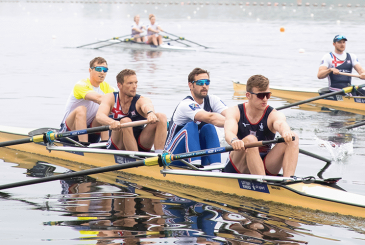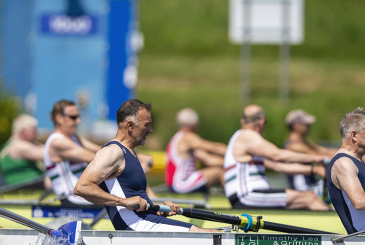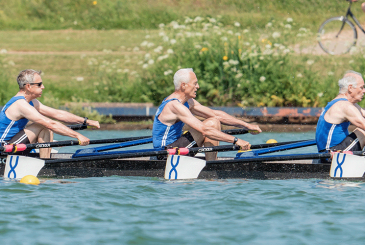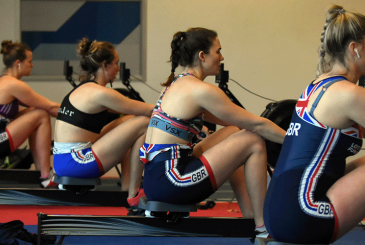Relative Energy Deficiency in Sport (RED-S) is a condition that all athletes and coaches should be aware of. Sarah Moseley, Lead Physiologist of the Great Britain Rowing Team, explains why
Relative Energy Deficiency in Sport (RED-S) is a condition that can affect female and male athletes and something that coaches should be informed about. RED-S was first described in the 2014 International Olympic Committee Consensus Statement as a syndrome with health and performance consequences, which are underpinned by ‘low energy availability’. This is when an athlete has insufficient energy availability to meet the demands of both exercise and essential bodily functions.
In females, the health issues related to low-energy availability have previously been described as a part of the ‘female athlete triad’, which describes an inter relationship of low energy availability or disordered eating, menstrual dysfunction and poor bone health. However, anyone who expends more energy than they have available to them is at risk of RED-S. Consequently, the female athlete triad has evolved to acknowledge the impact of low energy availability in males as well as females, and to cover a wide range of health and performance related consequences.
Endurance sports such as rowing, place a high demand on the body and rowers can expend large amounts of energy grinding out the miles on the water or in the gym each day.
Young developing athletes are also at a higher risk of developing RED-S, as puberty places a high energy demand on the body
When the body has low-energy availability, it will preserve energy by putting some bodily systems into ‘energy saving mode’. Just as when a phone goes into ‘battery saving mode’, some features will no longer function until the phone is charged sufficiently. The body works in this same way, and if it is not sufficiently recharged it can have short and long-term effects on health and performance.
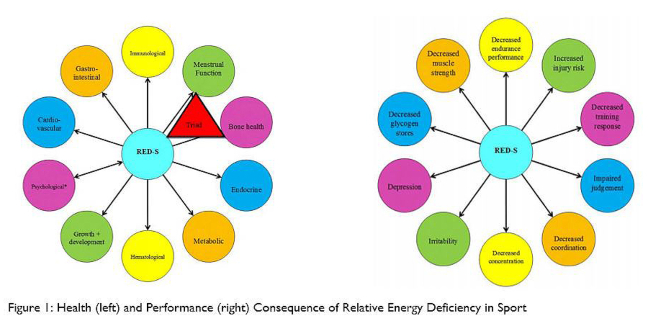
Any athlete elite or otherwise, can develop RED-S, however, it is typically prevalent in endurance athletes where training loads are particularly high and there is emphasis placed on low-body mass for performance and in body-mass restricted sports such as lightweight rowing. Young developing athletes are also at a higher risk of developing RED-S, as puberty places a high energy demand on the body.
Low-energy availability can occur intentionally i.e. through disordered eating or unintentionally through mismanaging daily energy requirements.
For example:
- An increase in training and/or competition load with a disproportionate increase in nutritional intake
- Lack of time and/or money for adequate meal planning, preparation and consumption
- A significant or stressful life event which may disrupt normal eating habits
- Lack of understanding of the individual energy requirements for training and day-to-day life activities.
There is plenty of evidence to show that male athletes are also affected by RED-S
In females, one of the most common external warnings of low-energy availability is the disruption and/or cessation of natural menstruation due to a decrease in the production of menstrual hormones, including oestrogen and progesterone. In females of reproductive age, natural menstrual periods are a sign that hormones are at a healthy level irrespective of how much exercise is being undertaken. Hormones are essential for adaptation to training, so any disturbance to this system will reduce the effectiveness of training and will likely reduce performance. However, many athletes believe that irregular menstrual periods are ‘normal’ for active females. For example, in a survey of exercising Australian women, one-third believed irregular periods were ‘normal’, and only half reported knowing that menstrual dysfunction was a risk factor for poor bone health.
While much of the research in this area has focused on the female athlete, there is plenty of evidence to show that male athletes are also affected by RED-S. Male athletes with RED-S have been shown to have impaired immune function, bone health and lower testosterone levels.
Other symptoms of RED-S may include:
- Recurrent illnesses i.e. cold even in the summer months
- Recurrent injury
- An unexplained reduction in performance
- Fatigue levels above what you would expect from a prescribed training load
- Mood disturbances
- Delayed growth development in children and teenagers
- Iron deficiency.
RED-S is a relatively new and complex syndrome that should be diagnosed and managed by a sports GP and/or nutritionist. However, for athletes and their support network, having greater awareness of the signs and symptoms of RED-S will help with the prevention, management, and earlier diagnosis.
The good news is that treatment for RED-S is relatively straightforward and typically involves increasing food intake and/or decreasing energy expenditure. Find out more about this here.
However, if you think you may have RED-S it’s important to visit your GP to get appropriate support and rule out other medical conditions.
Photo: Drew Smith and illustration credit here





